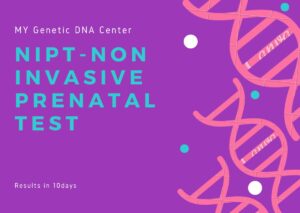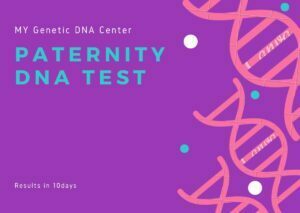LEUKEMIA DIAGNOSTIC COMPREHENSIVE PROFILE ANY 3 MARKERS:
The Leukemia diagnostic comprehenisve profile, utilizing markers such as CD123, CD34, and CD19, provides a thorough evaluation of abnormal hematopoietic and immune cell populations to aid doctors in diagnosing and managing leukemia effectively. By examining blood or bone marrow samples, doctors can detect the presence of malignant cells, determine their lineage, and identify specific subtypes of leukemia, including myeloid, lymphoid, or mixed-lineage variants. CD123 highlights myeloid progenitor cells, CD34 identifies immature hematopoietic stem and progenitor cells, and CD19 focuses on B-cell lineage involvement, allowing doctors to obtain a multi-dimensional view of the disease. This comprehensive approach enables doctors to differentiate leukemia from other hematological disorders, assess disease burden, and stratify patient risk accurately.
Additionally, doctors can monitor treatment response, track minimal residual disease, and adjust therapies, including targeted treatments, immunotherapy, or bone marrow transplantation, based on marker expression patterns. By integrating these findings with clinical presentation, imaging studies, and other laboratory results, doctors can develop personalized management plans that optimize patient outcomes. Overall, the Leukemia Diagnostic Comprehensive Profile empowers doctors to make informed, timely decisions, supports early detection of disease progression or relapse, and enhances the effectiveness of treatment strategies, ensuring patients receive precise and individualized care.
What is the Leukemia Diagnostic Comprehensive Profile, and why does it include multiple markers?
The Leukemia Diagnostic Comprehensive Profile represents a detailed testing approach that evaluates multiple cellular markers to provide doctors with a complete understanding of a patient’s leukemia status. By including markers such as CD123, CD34, and CD19, doctors can assess different aspects of the disease, including lineage, maturity, and the presence of abnormal cell populations. CD123 highlights myeloid progenitor cells, CD34 identifies immature hematopoietic stem and progenitor cells, and CD19 indicates B-cell lineage involvement, offering a multi-dimensional view of the leukemic cells. Combining these markers allows doctors to differentiate between acute myeloid leukemia, acute lymphoblastic leukemia, and mixed-lineage leukemia, which ensures accurate diagnosis and prevents misclassification.
Furthermore, evaluating multiple markers helps doctors determine disease burden, stratify patient risk, and identify minimal residual disease, which is crucial for planning treatment and monitoring therapy response. By analyzing these markers together, doctors can make informed decisions regarding targeted therapies, immunotherapy, and potential stem cell transplantation. Overall, including multiple markers in the profile enables a comprehensive, precise, and personalized approach to leukemia diagnosis and management, improving patient outcomes and supporting proactive clinical decision-making.
How do doctors choose which markers to include in this profile?
Doctors choose which markers to include in the Leukemia diagnostic comprehenisve profile by carefully considering the patient’s clinical presentation, suspected leukemia subtype, and initial laboratory findings. They select markers that provide the most relevant information about the lineage, maturity, and behavior of abnormal cells. For instance, doctors include CD123 to identify myeloid progenitor cells, CD34 to detect immature hematopoietic stem and progenitor cells, and CD19 to highlight B-cell lineage involvement. They also evaluate any previous test results, cytogenetic abnormalities, and patient history to ensure the chosen markers cover the full spectrum of potential leukemic populations.
By combining multiple markers, doctors can capture heterogeneity within the disease, differentiate between subtypes, and avoid misdiagnosis. Additionally, they consider which markers can guide therapy decisions, predict prognosis, and monitor minimal residual disease during or after treatment. This strategic selection allows doctors to develop a tailored testing panel that maximizes diagnostic accuracy, informs personalized treatment plans, and supports precise monitoring of disease progression and response to therapy.
Can this profile detect early-stage leukemia?
Yes, the Leukemia diagnostic comprehenisve profile can detect early-stage leukemia by identifying abnormal cell populations before they produce noticeable symptoms. Doctors examine blood or bone marrow samples for the presence and intensity of specific markers such as CD123, CD34, and CD19, which reveal immature or lineage-specific leukemic cells. Even when patients show minimal or subtle clinical signs, the profile allows doctors to detect small populations of malignant cells, providing an opportunity for timely intervention. Early detection enables doctors to initiate treatment before the disease progresses, reducing complications such as organ damage, severe cytopenias, or infections.
Furthermore, identifying leukemia at an early stage allows doctors to monitor minimal residual disease effectively, adjust therapy intensity as needed, and evaluate the risk of relapse. By combining marker analysis with patient history, laboratory results, and imaging studies, doctors can develop a proactive, individualized treatment plan. Overall, the profile equips doctors with a powerful tool to recognize leukemia early, enhance patient prognosis, and improve the effectiveness of therapeutic strategies.
How does CD34 assist in evaluating leukemia?
Leukemia diagnostic comprehenisve profile – CD34 assists in evaluating leukemia by serving as a key marker for immature hematopoietic stem and progenitor cells, which often expand abnormally in leukemic conditions. Doctors measure CD34 expression in blood or bone marrow samples to identify the presence and proportion of immature cells, providing insight into disease severity and aggressiveness. High levels of CD34-positive cells usually indicate a significant proliferation of undifferentiated progenitor cells, which helps doctors distinguish acute leukemia from chronic forms or other hematological disorders. Additionally, CD34 analysis informs risk assessment and prognosis by revealing the potential for rapid disease progression or relapse.
Doctors also use CD34 data to guide treatment decisions, including the selection of intensive chemotherapy regimens or the evaluation of patients for stem cell transplantation, as this marker reflects the pool of cells that can repopulate the bone marrow. By combining CD34 measurements with other markers like CD123 and CD19, doctors obtain a comprehensive view of the leukemic cell population, enabling precise classification, monitoring of minimal residual disease, and tailoring of personalized therapy plans. Overall, CD34 provides crucial information that supports accurate diagnosis, effective treatment planning, and proactive management of leukemia.
How does CD19 contribute to leukemia diagnosis?
Benefits of Leukemia diagnostic comprehenisve profile test:
Detects abnormal leukemic cells and differentiates leukemia subtypes
Provides multi-marker analysis for accurate diagnosis and risk assessment
Helps doctors monitor treatment response and detect residual disease
Guides personalized therapy planning, including targeted treatments and immunotherapy
Supports prognosis evaluation and risk stratification
Assists in early detection of leukemia, improving timely intervention
Reduces misdiagnosis and unnecessary treatments by providing detailed cellular information
Evaluates disease burden and progression across multiple cell lineages
Offers insights into both adult and pediatric leukemia cases
Complements other laboratory tests, genetic studies, and imaging for comprehensive patient care
Limitations of Leukemia diagnostic comprehenisve profile test:
Requires bone marrow or blood samples, which may involve discomfort or procedural risk
Cannot capture all rare or atypical leukemia subtypes if the selected markers do not cover them
Marker expression may vary with treatment, potentially affecting interpretation
Requires specialized laboratory equipment and trained personnel for accurate results
Does not provide structural organ information; must be combined with imaging for full evaluation
May not detect minimal residual disease at extremely low levels without repeated monitoring
Limited availability in some healthcare facilities due to the need for advanced technology
Cannot replace cytogenetic or molecular testing when additional genetic insight is required
Interpretation relies on expert hematopathology to avoid misclassification
Results may take several days depending on laboratory processing and analysis
Can this profile monitor treatment response?
How does CD123 aid in targeted therapy decisions?
CD123 identifies the interleukin-3 receptor alpha chain, which is overexpressed in specific leukemia subtypes. Doctors can use CD123 expression to determine whether patients qualify for targeted therapies, including monoclonal antibodies or CAR-T cell therapies that specifically attack CD123-positive leukemia cells. This targeted approach reduces damage to normal cells, enhances treatment efficacy, and minimizes adverse effects, providing personalized therapy based on cellular characteristics.
How do doctors collect samples for this profile?
Doctors typically collect bone marrow aspirates or peripheral blood samples to perform the Leukemia diagnostic comprehenisve profile. They process these samples for flow cytometry or immunohistochemistry, staining the cells with antibodies specific to CD123, CD34, CD19, or other selected markers. Proper sample collection, handling, and transport are essential to maintain cell integrity and ensure accurate marker detection. Patients benefit from careful preparation, including fasting or following medication guidelines as directed by their healthcare provider.
Can this profile help in prognosis and risk stratification?
Yes, doctors use marker expression levels to evaluate prognosis and stratify patients into risk categories. High CD34 expression often correlates with aggressive disease, while specific patterns of CD19 or CD123 expression may indicate treatment responsiveness or likelihood of relapse. By combining marker data with clinical presentation, blood counts, and genetic findings, doctors can predict disease course, tailor treatment intensity, and develop individualized care plans that maximize survival and minimize complications.
Conclusion:
The Leukemia diagnostic comprehenisve profile serves as a vital tool for accurately diagnosing and managing leukemia by analyzing multiple cellular markers such as CD123, CD34, and CD19. Doctors use this profile to identify abnormal cell populations, classify leukemia subtypes, assess disease burden, and guide personalized therapies. By combining marker expression data with clinical findings, blood counts, and genetic studies, the test enables early detection, effective monitoring, and risk stratification. Although it requires bone marrow or blood samples and specialized analysis, this comprehensive profile provides actionable insights that support precise treatment planning, improve patient prognosis, and enhance overall management of hematological malignancies.





